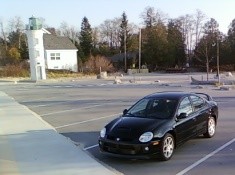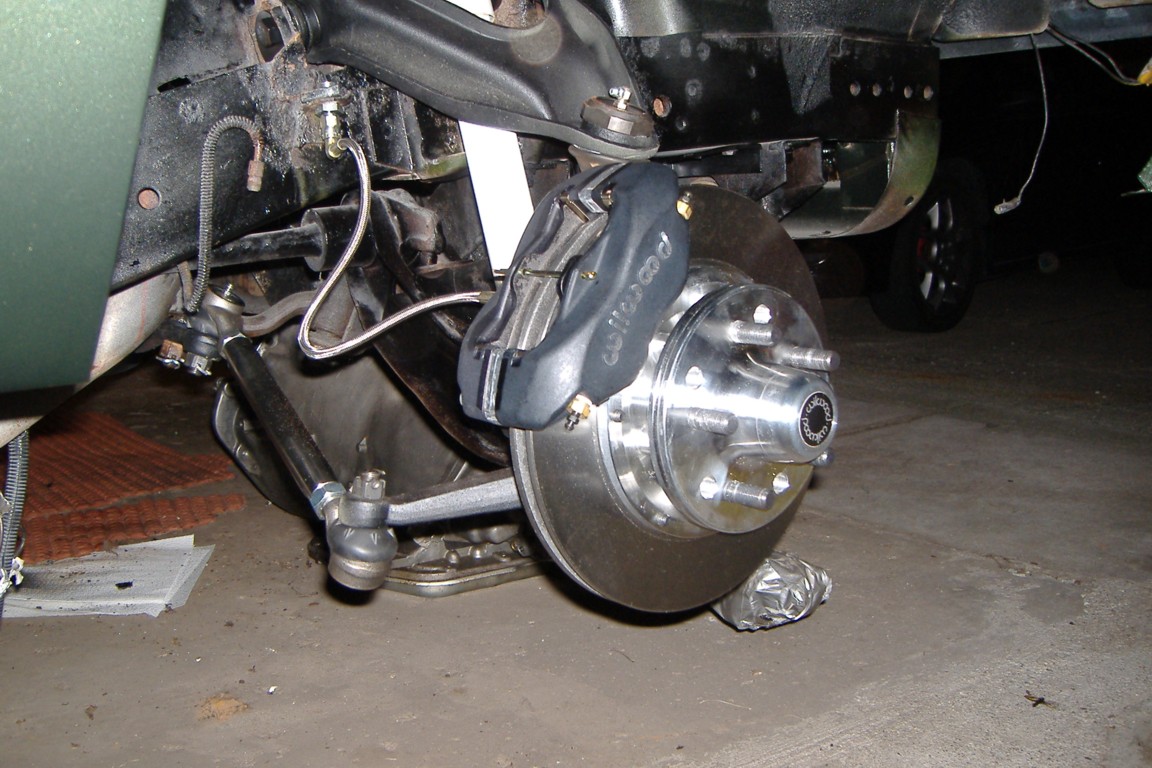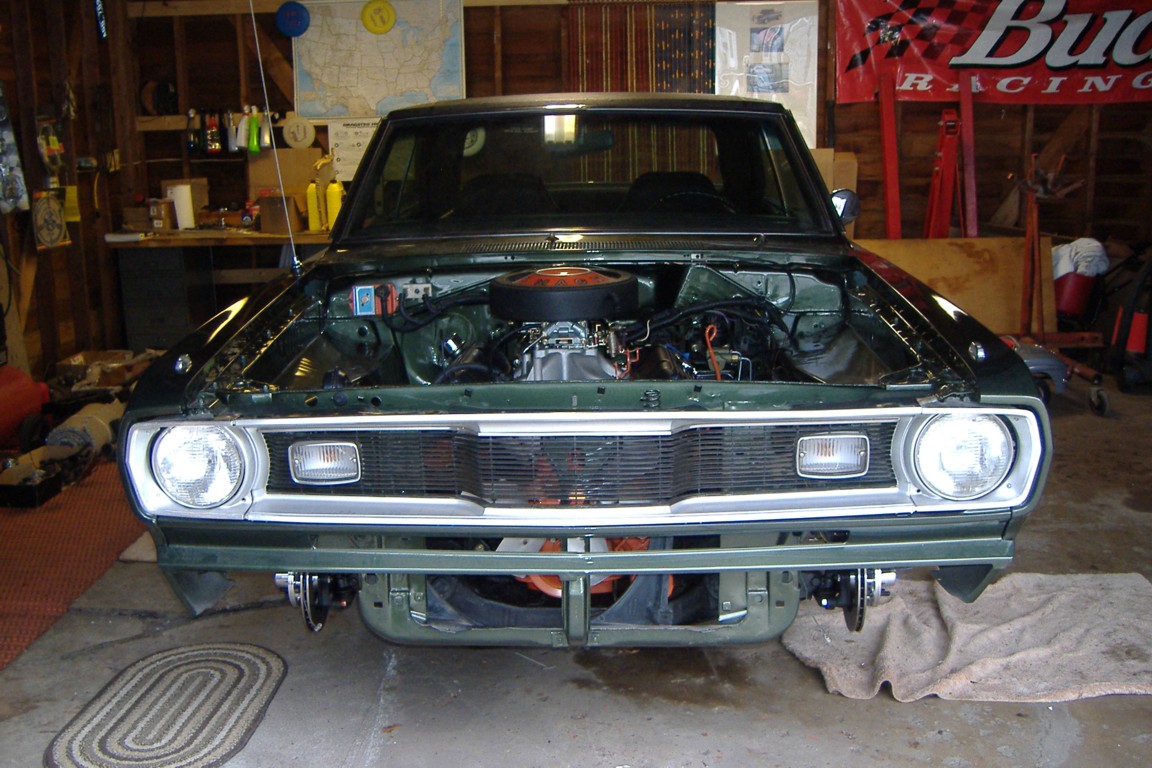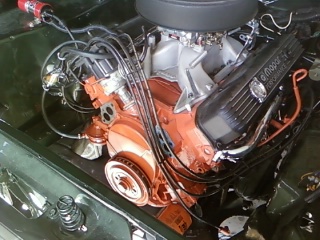| Neon on the road | Project Dart upgrades |
 |
 |
I grew up in the small town of Empire in Northern Michigan. My great-great-great-grandfather started the town in the 1870's selling wood to the steam ships and milling lumber. With the vast history of lumber in my family, it appeared as though I was destined to follow in the footsteps of my ancestors. I grew up in the woods, cutting firewood and logging.
I started driving tractors at a very young age. The tractors were powerful, but I always wanted to go faster. As soon as I was tall enough to see over the steering wheel of the trucks we had, I was allowed to drive them. My grandfather did two things to help me, but one thing to hinder me. He bolted a block of wood on the pedals and added a booster seat so I didn’t have to look under the steering wheel. Then he installed a bolt under the gas pedal to act as a governor.
I still wanted to go faster even though there were trees all around, and the roads I was allowed to drive on were dirt and very rutted. At the age of 14, I decided to go to a junk yard and pick out an engine to rebuild to make a little money. With my grandfather’s knowledge of engines, we took a Chrysler 318 CID and disassembled it. We then took all of the parts to an engine machine shop near Gaylord to do all of the machining. This was the start of my career.
After the 318 CID was sold, I used the money to buy and rebuild more engines. When I was 15 years old, I bought my first car, a 1971 Plymouth Valiant. I wanted to go fast and prove to all the doubters that I could build a car. After one week of driving the Valiant with a worn-out 318 CID, I decided to install a Big Block 451 CID engine. At this time there were no bolt-on aftermarket parts that I could buy for this engine. With the completion of this project, I had proven to myself and others that I could rebuild a vehicle. I knew from that point on that I wanted to be an engineer.
When I was a sophomore in high school, I went to the Career Tech Center in Traverse City to take their machining course. With the knowledge I gained, I started working for a small machine shop in Empire. This helped me gain real-world experience and apply my machining knowledge. During my junior year of high school I was accepted into the Manufacturing Technology Academy (MTA).
At MTA, I took all of the basic high school classes, but also studied automation, robotics, electrical systems, fluid power/pneumatics, CAD, design processes, rapid prototyping, manufacturing processes/CNC, quality assurance, and project management/teamwork. MTA was connected to the major businesses in the Grand Traverse area and was sponsored by local manufacturers as well as global manufacturers.
While I was at MTA, I took a trip down to Big Rapids to see what classes Ferris offered. While I was there, I met a professor who could see my passion for vehicles. I was told that if I took the mechanical engineering courses, by the time I had my associate's degree, the Automotive Engineering Technology program would be up and running. I had been accepted at many other universities around the country, but compared to Ferris, none of them offered what I wanted. I liked the fact that I could take an engine machining course plus learn the theories behind engines. I would be able to actually see and feel what I was learning. I still had to take all of the other courses that we often think are unnecessary, but as I’ve gotten older, I’ve found it more and more true that the classes we think are not necessary for our success are in fact very important.
Before I began my studies at Ferris, my grandfather and I had decided to start a lumber business to help my cousin and I go to college. I had the choice to go to a Big Ten school, graduate with a large debt and be just a number, or to go to Ferris and be part of a new degree/program. Obviously I decided to go to Ferris. Running a business full-time and going to college full-time turned out to be a very difficult task, but with determination and hard work (and very little play time) this was accomplished.
After graduating with an associate’s degree in Mechanical Engineering and a bachelor’s in Automotive Engineering Technology, it was time for me to take another step and move out of the Traverse City area. I found a job as a test engineer for Meritor WABCO. In this position, I tested class 6 – 8 vehicle’s ABS, Roll Stability Control (RSC), Electronic Stability Control (ESC), Collision Mitigation System (CMS), and Adaptive Cruise Control (ACC). This was a great position. I had the opportunity to travel all over the country to many of the heavy vehicle OEMs, as well as most of the fleets. I had the privilege to drive on test tracks that most of us could only dream about. Then I decided to start a family. With the amount of travel I was doing, I knew I needed to find another job that didn’t require as much travel.
Next, I went to work for ZF as a test engineer. There I was in charge of warranty return testing, as well as DV (design verification) and PV (product verification) testing of ball joints, cross axis joints, stabilizer links, toe links, and upper and lower control arms. I would formulate the plans for the testing and meet with the OEMs to discuss certain parameters that should be tested. I was in charge of testing the entire chassis of the Fisker Karma, the first electric luxury performance vehicle in the market. After this, I decided to pursue a career in the field of my true passion - engines.
I’m now a project engineer for a company called Hilite International. I’m in charge of the cam phasers and solenoids for all GM products that Hilite International develops and supplies. I’m also involved with the testing side of the business, putting to use my vast knowledge of testing and engine building.
I’m a member of the Ferris State University Advisory Board. This board of engineers reviews the classes that each student needs to take. We give advice, come up with new ideas, and share our real-world experiences to assist the next generation of automotive engineers. No one said any of this was going to be easy, but if you put your mind to it, anything in this world can be accomplished. With hard work and dedication to this program, you may likely become a leader in the automotive industry.
| Wayne's project Dart | |
 |
 |

